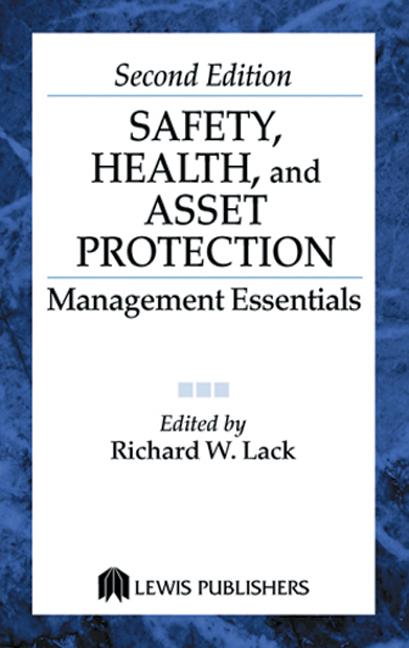A setback for the EPA, fireworks safety warnings for both workers and consumers and one industry’s strategy for avoiding safety regulations were among the week’s top occupational safety and public health and safety news posted on ISHN.com this week.
Maintenance worker falls into water tower
A man working alone, doing maintenance work on a water tower in Baraboo, WI, was seriously injured when he fell into the tower, according to a release from Baraboo city officials.
Measures taken during 2014 chemical spill were “appropriate”
The National Toxicology Program (NTP) has completed a series of short-term toxicity studies it conducted over the past year to evaluate chemicals spilled into the Elk River in 2014.
MSHA to award $1 million in grants for mine safety training
The U.S. Department of Labor’s Mine Safety and Health Administration (MSHA) has announced the availability of $1 million for training or training materials to support mine rescue or mine emergency preparedness in underground mines.
OSHA: protect workers from dangers of handling fireworks
In preparation for July 4th celebrations, OSHA is urging employers in the fireworks and pyrotechnics industry to protect their workers from hazards while manufacturing, storing, transporting, displaying and selling fireworks for public events.
From preventive healthcare to ergonomics, green jobs to mental health
A+A 2015 to cover "full spectrum" of EHS issues
Statement by Bruno Zwingmann, President of the German Federal Association for Occupational Safety and Health (Basi), on the occasion of the 34th International Congress on Occupational Health and Safety, A+A (27-30 October 2015).
PTSD raises heart attack risk in women
Women who experience traumatic events or develop post-traumatic stress disorder (PTSD) may have a greater risk of future cardiovascular disease than women with no traumatic history, according to research in the American Heart Association (AHA) journal Circulation.
NFPA: There’s no safe way to use consumer fireworks!
Only attend public fireworks displays put on by trained professionals
As the Fourth of July approaches, the National Fire Protection Association (NFPA) is reminding the public that there’s no safe way to use consumer fireworks. According to NFPA, coordinator of the Alliance to Stop Consumer Fireworks, over 11,000 injuries resulted from consumer use of fireworks in 2013.
Center for Safety and Health Sustainability appoints Fay Feeney to Advisory Board
Adding to its list of global leaders in safety, the Center for Safety and Health Sustainability (CSHS) is pleased to announce the addition of Fay Feeney to its Advisory Board. Feeney’s knowledge and experience in risk management and corporate governance will help advance the CSHS vision for safe, healthy and sustainable workplaces for all.
EPA plan to reduce power plant emissions halted by Supreme Court
The U.S. Supreme Court yesterday announced a ruling that amounts to a setback for an Obama administration initiative to combat climate change by limiting pollution from coal-fired power plants.
ASSE’s COPS names award winners
The winner of this year’s Council on Practices and Standards (COPS) Safety Professional of the year award is Thomas (Thom) Kramer, P.E., CSP Mr. Kramer is a safety consultant and structural engineer with more than 15 years of expertise. As a dually registered professional engineer and certified safety profession, he has spent much of his career consulting with clients on the investigation and renovation of facilities, which often required extensive and creative structural and safety modification.
62-year-old worker dies after manufacturer ignores safety hazards
OSHA cites Ridewell Corp. for one willful safety violation
If they had been in place, safety mechanisms might have saved a 62-year-old parts assembler who died after he was struck by a 4-pound metal spacer that flew off a 4-ton hydraulic press, OSHA inspectors determined.
Falling construction debris: A street life hazard in New York City
In the past five years, 59 people have been struck by falling debris from New York City construction sites, according to the New York Post. And the numbers are on the rise: 27 percent of those pedestrians were victimized between January and September in 2014.
Cirque du Soleil returns to Las Vegas stage after acrobat’s death
Late last year, performances resumed in a Cirque du Soleil show after changes were made to the choreography and equipment used in the scene in which a performer died in a fall.
Chevron’s Dropped Objects Prevention Scheme (DROPS)
Historically, dropped objects have played a principal role in oil and gas incidents. This situation should not be tolerated or allowed to continue. We must eliminate this type of incident. Dropped objects is a collective issue and not just an operator or a rig owner’s problem; it is a common problem for everyone in our industry.
How to protect against the risks of working at height
The main hazards associated with working at height are people falling and objects falling onto people below. These may occur as a result of inadequate edge protection, or from objects in storage being poorly secured.
Arc flashes cause 7k injuries per year, $200K to $750K hospital costs
Federal regulators’ adoption of industry consensus standards shows their desire to keep up-to-date with worker safety risks posed by electricity, including highly dangerous arc flashes that cause thousands of burns each year, according to Business Insurance, a bi-weekly magazine and daily news website.
Journeyman at Missouri utility company suffers arc flash injury
A journeyman lineman with Marshall Municipal Utilities in Missouri was airlifted to a hospital after he suffered an arc flash injury on the job on June 8, according to the Marshall News.
A FairWarning story
Off-road industry looks to Congress to put brakes on safety regulation
Manufacturers of off-road vehicles have mounted fierce resistance to proposed federal rules aimed at reducing rollover crashes that have killed hundreds of riders. After failing to persuade the Consumer Product Safety Commission to shelve the rules, the companies have turned to Congress to run interference.
Meeting energy needs more safely and sustainably
Chevron director urges oil industry to collaborate
According to Chevron’s Craig May, society has challenged the oil and gas industry to show that it can meet the world’s growing energy needs in a safer and more environmentally sustainable way.
Reduce the risks of objects falling from height
When people are working at height it's essential to consider the risk of objects falling onto somebody or something below. Any hand-held equipment such as drills or saws can be dropped or knocked over the edge of a platform or walkway. Materials such as nails, pieces of wood and debris can also represent a significant hazard.
UK property company fined for unprotected employee working at dangerous heights
During the demolition of a building, a complaint was lodged with UK Health and Safety Executive inspectors, who visited the site and found a worker stripping slates from a fragile roof without any safety measures in place to prevent a fall, or mitigate any potential life-threatening effects as a result of such a fall.
A quick guide to New York City’s fall hazards and dropped objects dangers
Planning to vacation in the Big Apple this summer? You might want to give yourself a safety briefing before taking to the streets. The Village Voice recently listed hazardous situations regularly encountered in the hustle and bustle of the city that never sleeps.
Around the world
New report: 400 million lack access to health services
A report from the World Health Organization (WHO) and World Bank Group report reveals a dismal state of affairs for global health: approximately 400 million people do not have access to essential health services and 6% of people in low- and middle-income countries are tipped into or pushed further into extreme poverty because of health spending.


